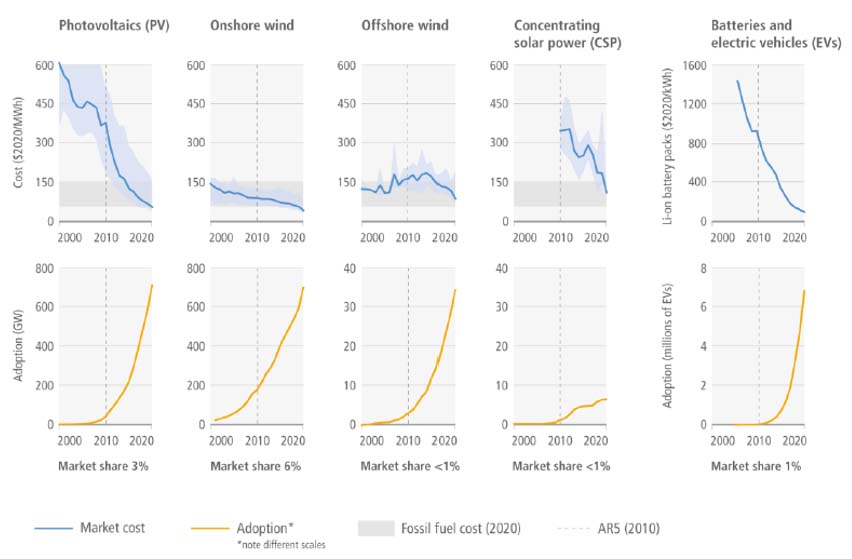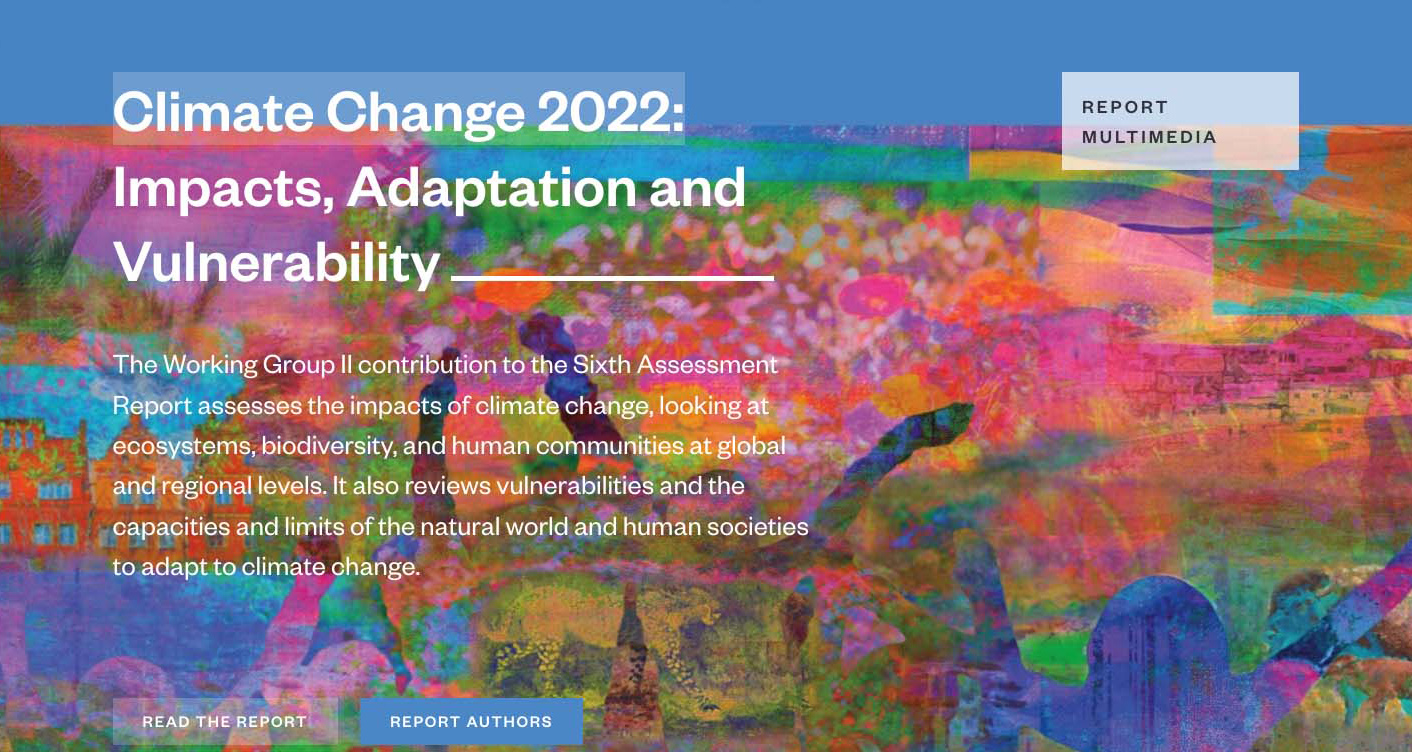Today the 3rd part of the 6th IPCC report is released. Like all the previous reports, the science tells us unequivocally that we are continuing in the wrong direction. Unfortunately, we will not achieve the Paris Climate Agreement to which we are committed, despite the fact that it was negotiated and happily agreed by 196 nations.
The agreement set a safe target of keeping the global average temperature below 2°C (ideally 1.5°C) compared to the pre-industrial period. To achieve this, the solution is clear: as the IPCC report once again points out, we must stop using fossil fuels immediately, in some cases even before the economic life of existing infrastructure has ended. The report goes further, and offers some clues (and therefore signs of hope) by indicating:
- that the cost of renewables and energy storage continues to fall dramatically, making low-carbon energy systems more than competitive with fossil fuels (see figure SPM.4 in the Summary for Policy Makers);
- the need to accelerate the production of renewable energy, while lowering our overall energy demand, a strategy that is possible through equitable energy sufficiency and efficiency policies; and
- that we need to focus on strategies other than biomass alone to remove greenhouse gases from the atmosphere (e.g. by changing our diets and increasing respect for biodiversity).

Ce rapport est d’une grande utilité, car il fait des propositions concrètes, et donc confère à chacune et chacun un cap évident à suivre – et les responsabilités y afférentes. Ici, j’aimerais réfléchir avec vous à celles de l’UNIL. La transition écologique, qui comprend la transition (ou, désormais, transformation) énergétique, fait d’ailleurs partie de ses cinq enjeux sociétaux prioritaires. Atteindre l’objectif de l’Accord de Paris me semble être un bon cadre de départ. La question est alors simple : l’empreinte carbone de notre activité nous permet-elle d’y rentrer ? Pour y répondre, basons-nous sur the estimates made by UNIL since 2013.
Although incomplete, this data states that we produced about 16,500 tons of "CO2 equivalent" in 2019, compared to 9,600 in 2020, when the university was largely closed due to the health crisis. Knowing that a production of one tonne of CO₂ equivalent (per person) by 2050, and eventually net zero, would bring us within the Paris Agreement target, and that the 22,000 people (about 17,000 students and 5,000 researchers, teachers and PAT members) who make up the university community do not frequent the campus 365 days a year, it has to be said that our carbon footprint is still far too high. In addition, these estimates are incomplete, as they do not include essential activities such as professional mobility (which can have an impact of more than 50% on the results of this same research) and the private activities of each individual.
We still have a lot of work to do on many issues, such as energy consumption and storage, our relationship with food on campus, professional mobility, use of work space, management of IT equipment, management of financial assets... Although the challenge is enormous, I am sure that we can collectively achieve it. As the IPCC report shows, we have no choice.
You can also read
Nous ne sommes pas du tout sur la bonne trajectoire. La bonne nouvelle, c’est que toutes les options sont à notre portée, mais une transformation radicale est indispensable.
L’interview de la prof. Julia Steinberger, sur le site CLIMACT
